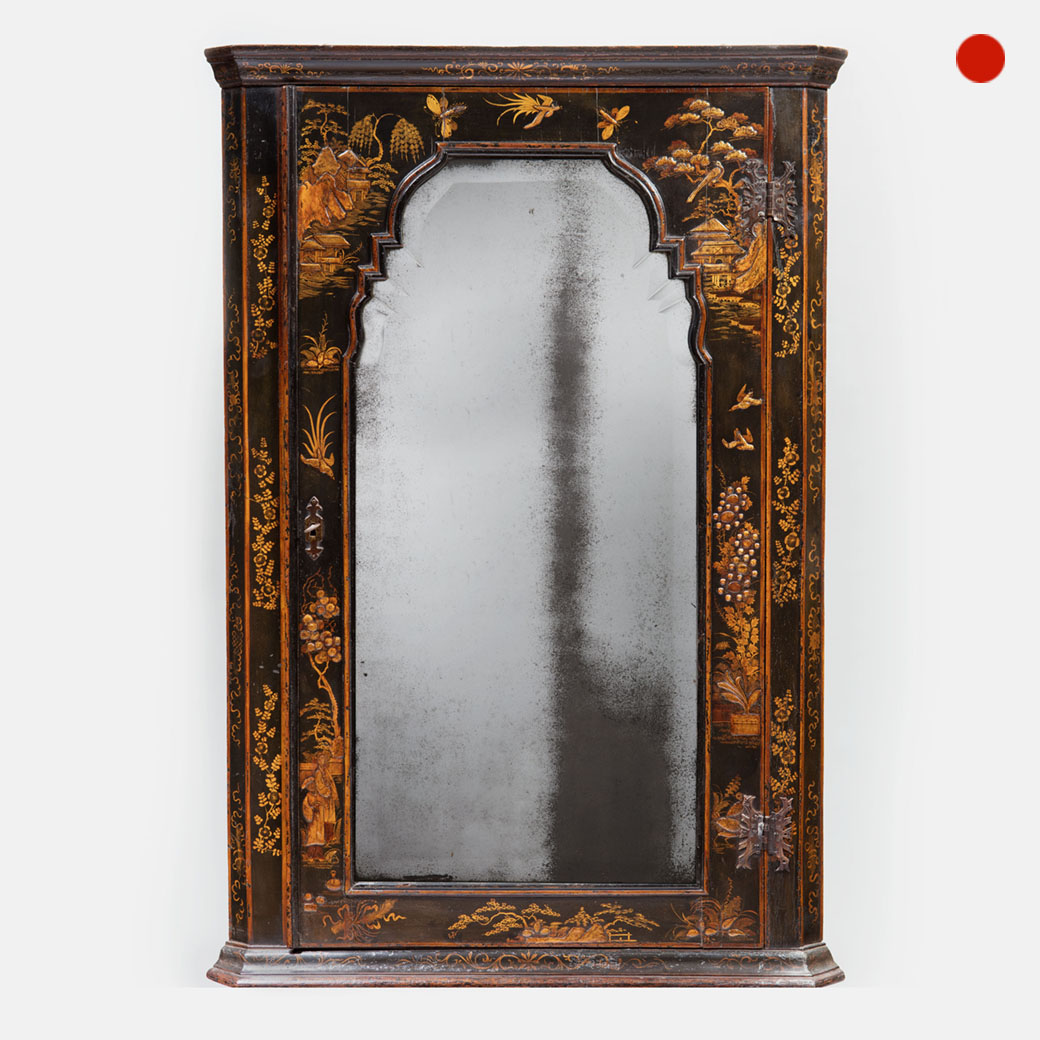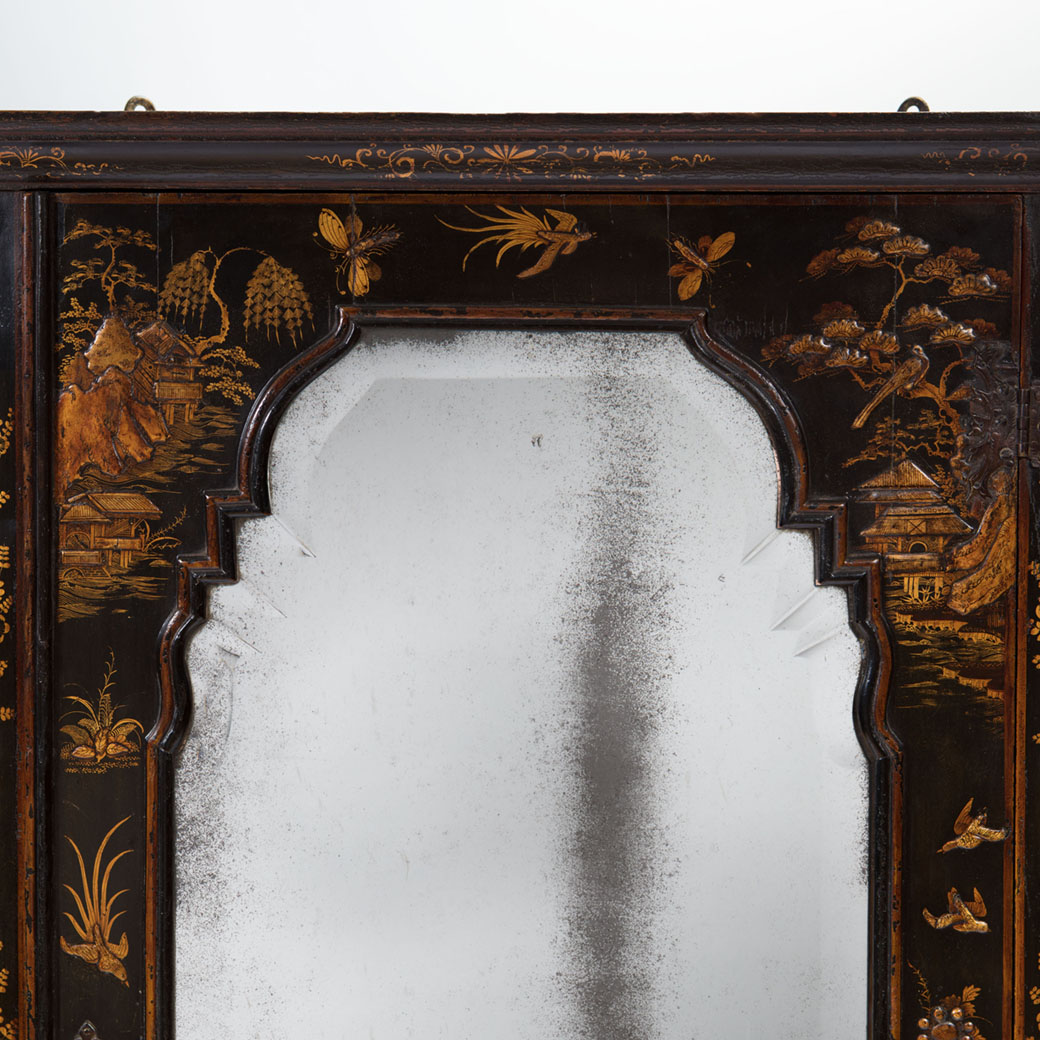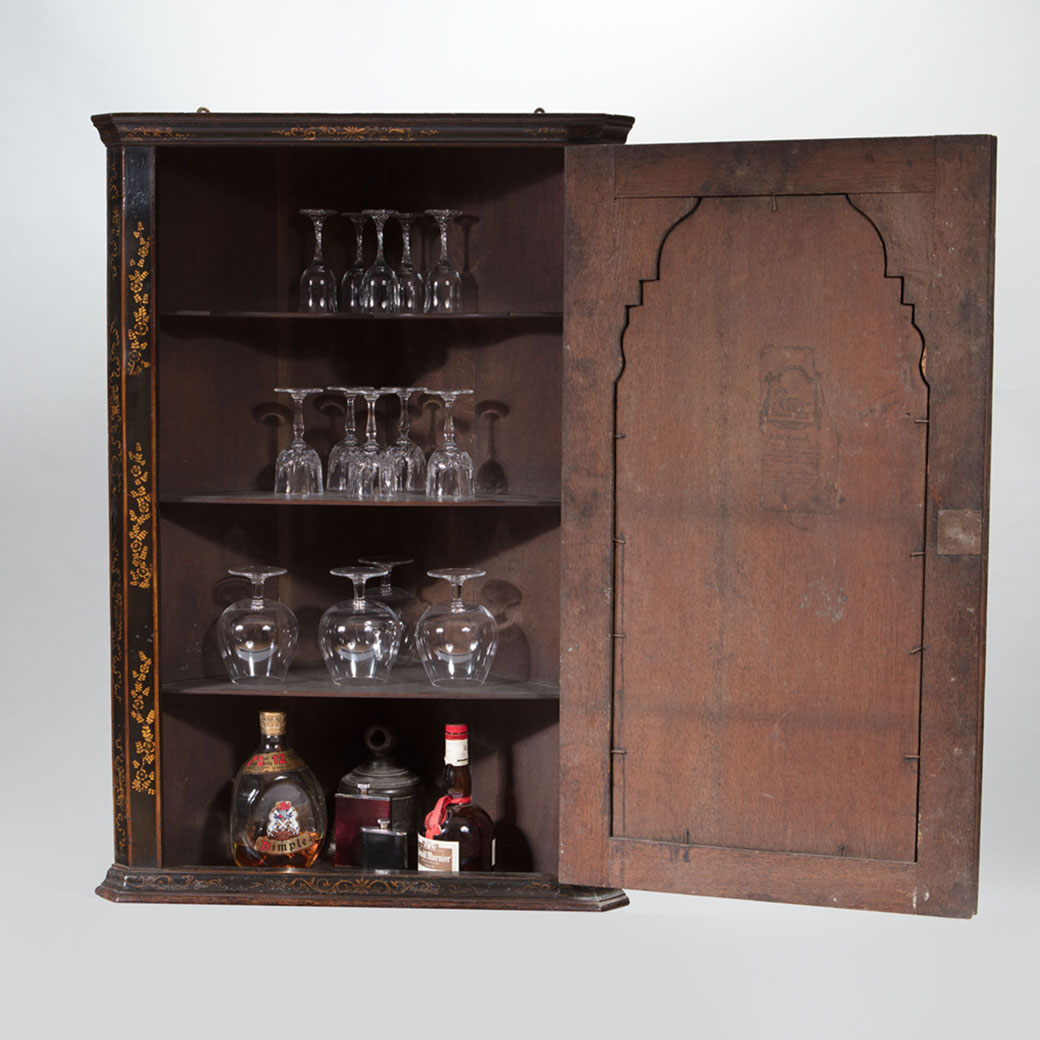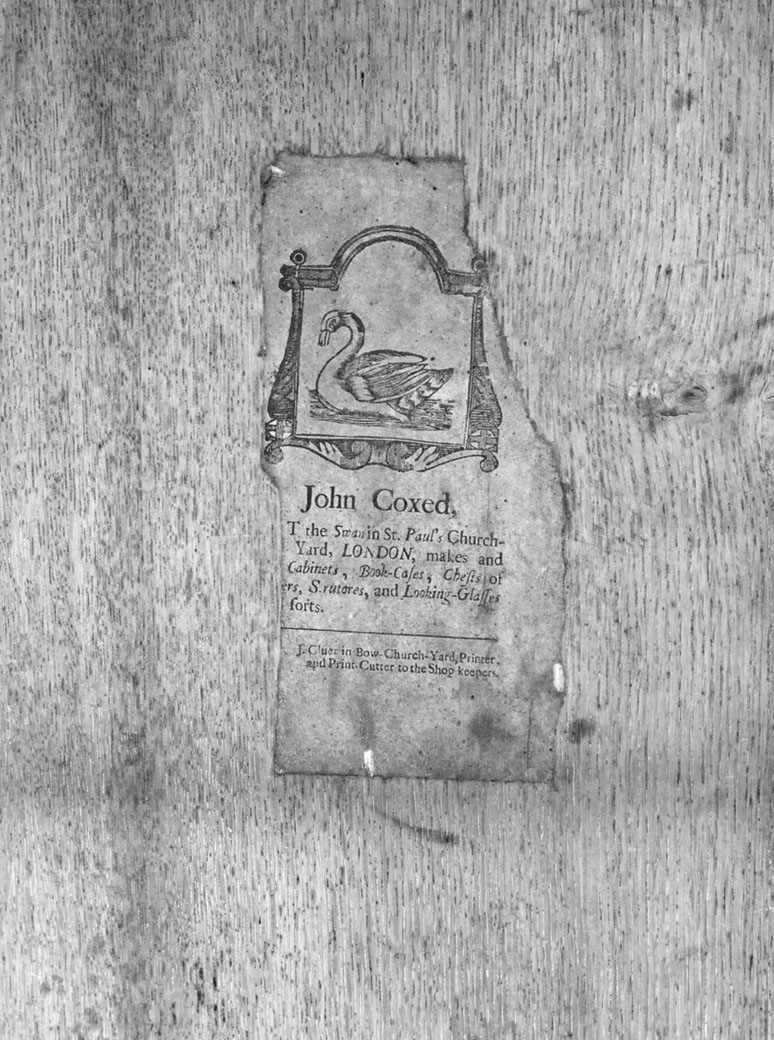JOHN COXED Also known as COXED & WOSTER (worked c.1700-c.1718)
Important Queen Anne Japanned Chinoiserie Corner Cupboard by John Coxed
1711-1715 England
Sold
Request Information
Follow Us
Important Queen Anne Japanned Chinoiserie Corner Cupboard by John Coxed
JOHN COXED Also known as COXED & WOSTER (worked c.1700-c.1718)
1711-1715 England
Important Queen Anne Japanned Chinoiserie Corner Cupboard by John Coxedard
The original bevelled mercury mirror plate is boarded by a double-d moulding and framed by its case of japanned, and detailed chinoiserie designs of differing forms. The chinoiserie work is incredibly fine for the period and includes figural scenes, a cliff face with lapping water, vegetation, insects, and birds to its entirety. The chased escutcheon is original along with the key, lock and opens to an interior of straight and shaped shelves of oak. Directly behind the mirror plate sits the original backboard with the earliest form of John Coxed trade label. The label reads “John Coxed T the Swan in St Pauls Church-Yard London, makes and cabinets, book-cases, chest of drawers, scrutoires, looking glasses, forts.” J. Clue in Bow Church-Yard Printer, and Print-Cutter to the shop keepers.
Six pieces of furniture bearing John Coxed’s labels have so far come to light, and they bear two different styles of label to which this is thought to be the earliest version. This corner cabinet is not only one, of the only now three known examples of the earliest form, but also the only recorded Japanned and chinoiserie piece by John Coxed (1711-1718). It is assumed that this label dates from 1711-1715 and the later version’ from 1715-18. This allows us the rare opportunity to accurately date this unique piece, to sometime between 1711-15.
Typically, Pieces by the outfit are veneered in walnut, mulberry or burr elm and stained to resemble tortoiseshell. Some pieces are embellished with kingwood cross-banding and pewter stringing. This metal line inlay was almost certainly due to the influence of Gerrit Jensen, who introduced such fashionable Continental habits into England in the late 17th century.
All known pieces by Coxed and Woster are in important private collections and museums, to include, The V&A Museum, Colonial Williamsburg, Rousham House and Alexander George Fine Antiques Ltd.
John Belchier also operated from the Southside of St Pauls Churchyard, just a few doors down from Coxed in the first quarter of the 18th century. The earliest reference to John Belchier can be found in the accounts of Boughton House between 1687 and 1710. Belchier is most famous for his Chinoiserie work and it is possibly or even highly likely that it was he who undertook the chinoiserie work of the corner cabinet we are offering.
Condition
Original condition
Dimensions
Height 38.00 inch (96.52 cm)
Width 26.00 inch (66.04 cm)
Depth 14.50 inch (36.83 cm)
Provenance
Private London collection
Literature
The trade label from this corner cupboard is illustrated in the ‘Pictorial Dictionary Of Marked London Furniture, 1700- 1840’, page 153, fig 236, by leading furniture historian Christopher Gilbert.
Dictionary Of English Furniture Makers 1660-1840, by The Furniture History Society, page 205.
PREVIOUSLY SOLD

17th-Century William and Mary Olive Oyster Chest of Drawers on Stand
A superb example of well-chosen hand-cut olive oyster veneers, combined with the finesse of a highly skilled craftsman, from the reign of William & Mary (1689-1702).
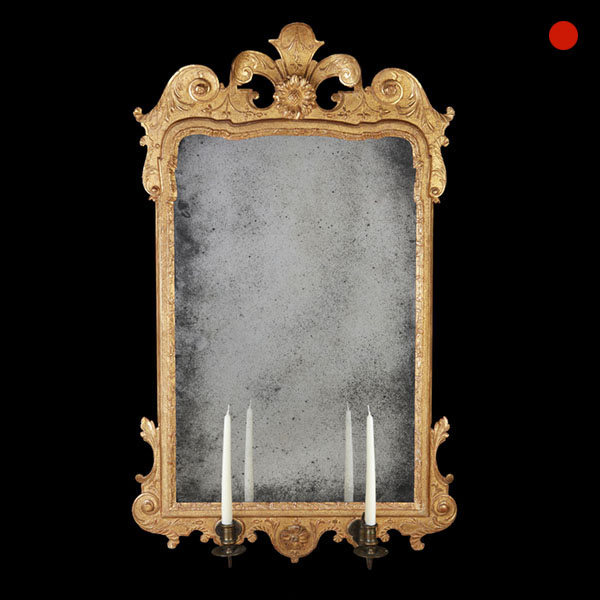
George I Gilt Gesso Mirror
IMPORTANT DESIGN – A fine early 18th-century gilt gesso mirror of generous proportions retaining its original shaped and bevelled mirror plate. The frame expresses great freedom through its carving with scrolling leaves adorning the frame centred by an elaborate three-dimensional cartouche.
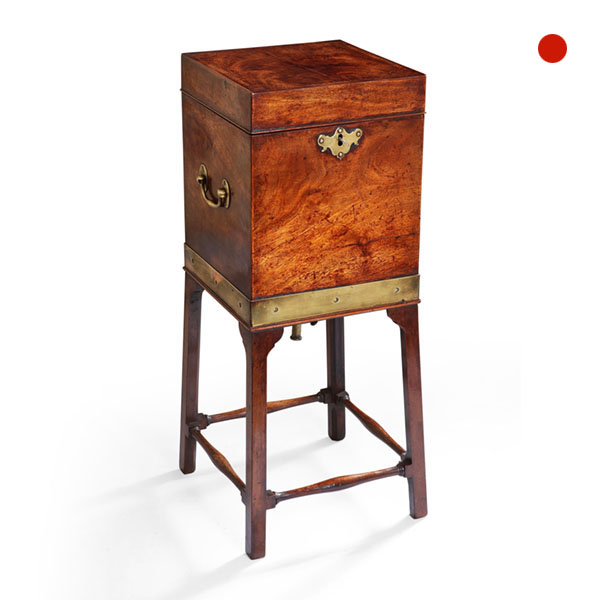
George III Mahogany Wine Cooler, Cellarette
Superb George III mahogany wine cooler or cellarette on stand. The cellarette is in fabulous original condition with a lovely rich patina. Lovely well-patinated flame of mahogany to the top, with a line rope inlayed stringing of holly and box. Original led lined interior divided into four sections.
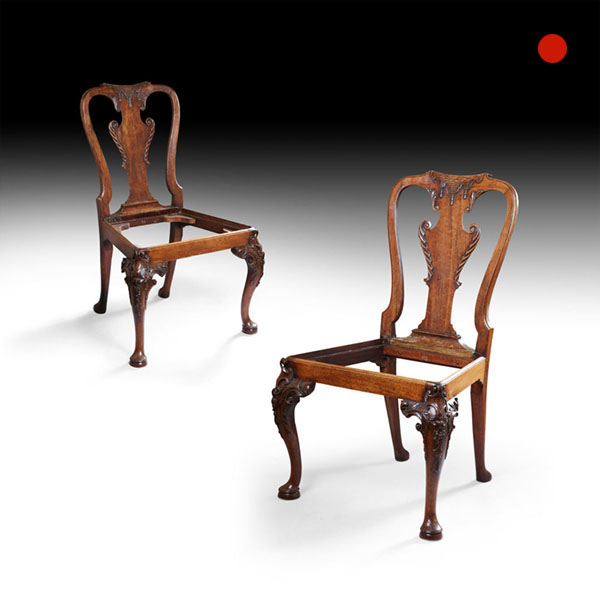
George I Carved Irish Walnut Pair of Chairs
A rare and fine pair of Irish George I walnut side chairs of excellent colour and patina, circa 1720. The undercut shaped back-splats of violin form are beautifully and naturally carved in acanthus leaves, returning into eared scrolls, topped by a crest rail depicting curtain swags and fine hanging passementerie.
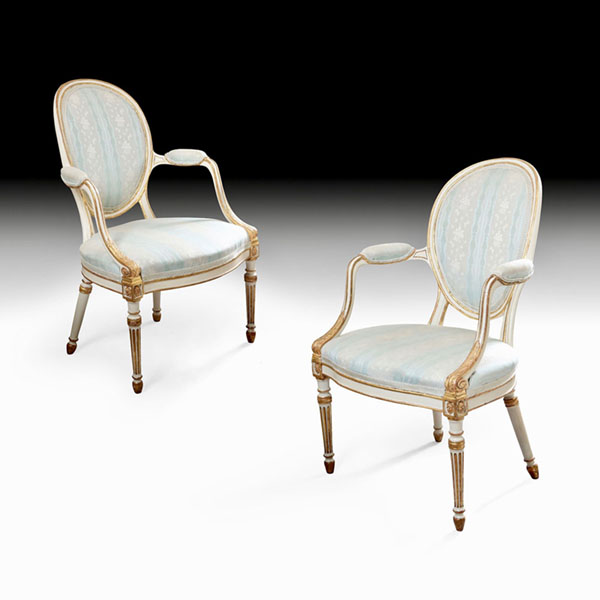
George III Parcel Gilt Painted Pair of Chairs
A fine pair of painted and carved George III English chairs in the French taste, upholstered in silk damask.
Possibly by John Linnell.
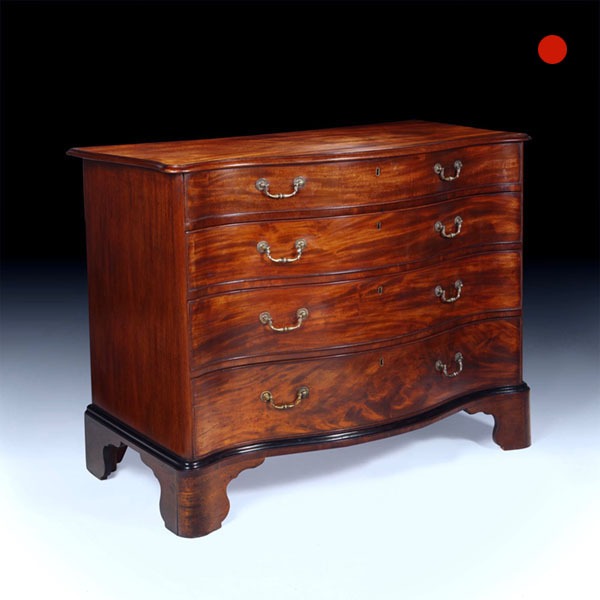
George III Mahogany Serpentine Chest of Drawers
Dating from one of the most famous and highly celebrated periods in English furniture history, now known as the ‘Chippendale period’.
This fine George III mahogany serpentine chest is very much in the manner of Thomas Chippendale.

17th-Century William and Mary Olive Oyster Chest of Drawers on Stand
A superb example of well-chosen hand-cut olive oyster veneers, combined with the finesse of a highly skilled craftsman, from the reign of William & Mary (1689-1702).

George I Gilt Gesso Mirror
IMPORTANT DESIGN – A fine early 18th-century gilt gesso mirror of generous proportions retaining its original shaped and bevelled mirror plate. The frame expresses great freedom through its carving with scrolling leaves adorning the frame centred by an elaborate three-dimensional cartouche.

George III Mahogany Wine Cooler, Cellarette
Superb George III mahogany wine cooler or cellarette on stand. The cellarette is in fabulous original condition with a lovely rich patina. Lovely well-patinated flame of mahogany to the top, with a line rope inlayed stringing of holly and box. Original led lined interior divided into four sections.

George I Carved Irish Walnut Pair of Chairs
A rare and fine pair of Irish George I walnut side chairs of excellent colour and patina, circa 1720. The undercut shaped back-splats of violin form are beautifully and naturally carved in acanthus leaves, returning into eared scrolls, topped by a crest rail depicting curtain swags and fine hanging passementerie.

George III Parcel Gilt Painted Pair of Chairs
A fine pair of painted and carved George III English chairs in the French taste, upholstered in silk damask.
Possibly by John Linnell.

George III Mahogany Serpentine Chest of Drawers
Dating from one of the most famous and highly celebrated periods in English furniture history, now known as the ‘Chippendale period’.
This fine George III mahogany serpentine chest is very much in the manner of Thomas Chippendale.
YOU MAY ALSO LIKE
No Results Found
The page you requested could not be found. Try refining your search, or use the navigation above to locate the post.
No Results Found
The page you requested could not be found. Try refining your search, or use the navigation above to locate the post.



